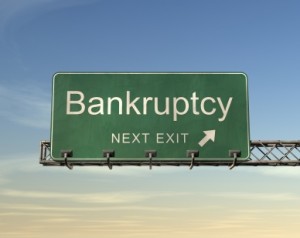bankruptcy is a brand event
CNN Money recently featured a list of 14 “brand name companies” that are going bankrupt. 
If the bad news is that bankruptcy filings are on the rise, the good news may be that the stigma which used to accompany them is on the decline. Whether because more people are having personal experiences with bankruptcy or because news of companies undergoing bankruptcy now regularly populate the business media, it seems bankruptcy is no longer viewed by the public as negatively as it has in the past. And GM’s highly publicized bankruptcy was even heralded by some as the best thing that could have happened to the company.
With bankruptcy more commonplace, more business owners and leaders are considering it as a solution. It’s important to understand, however, bankruptcy is not simply a financial transaction. It’s a brand event as well and should be managed as such.
Here are a few thoughts on how to mitigate the negative impact of bankruptcy on your brand:
1. Be as transparent as possible. Strong brands are built – and rebuilt – on trust. One of the most important and urgent imperatives is to retain customer confidence in your brand. Bankruptcy calls into question a product’s quality (is the company cutting corners in order to address financial woes?), as well as a company’s ability to address customer service needs now (are they going to pay attention to my needs or are they distracted by their own business problems?) and in the future (are they going to be around when I have a question or need a repair?) You need to regain customers’ trust.
By communicating clearly what you’re doing, why, and how, you are demonstrating you are worthy of their reconsideration. This is not to say that you should dwell on the details of the bankruptcy or your recovery plan – but rather, you should ensure the information is readily available to those who want it and you should proactively manage the conversation in the marketplace and with customers with open, honest communication.
2. Follow-up as soon as possible with new tangible benefits for your customer and visible evidence that the business has changed. It will take awhile to regain any lost brand equity, but making bold moves quickly jump-starts the process. By initiating a dramatic change, you deliver increased/improved brand value to customers and signal your intention to continuing building a strong brand. Plus you give people something besides the bankruptcy to talk about. A breakthrough new product — or new operating practices or innovative service policies – can go a long way to renewing excitement about the brand.
3. Engage all of your stakeholders. Employees, board members, business partners, etc. are all stakeholders in your brand – and they’re often your most influential brand ambassadors. As such, you should inform, inspire, and instruct them during the duration of the bankruptcy and recovery. Ensure they are kept up-to-speed on the business status, recovery plan, and current priorities. Motivate and encourage them by communicating a compelling vision for the future. And empower them to communicate with others about the bankruptcy by providing them with the information and guidelines on how to do so. If your stakeholders are focused on building the brand, it’s likely your customers will be also.
Companies may no longer need to vigorously avoid bankruptcy, but they do need to understand its brand implications and act accordingly.
Related posts:
- brands we would miss — a series
- notes on a crisis